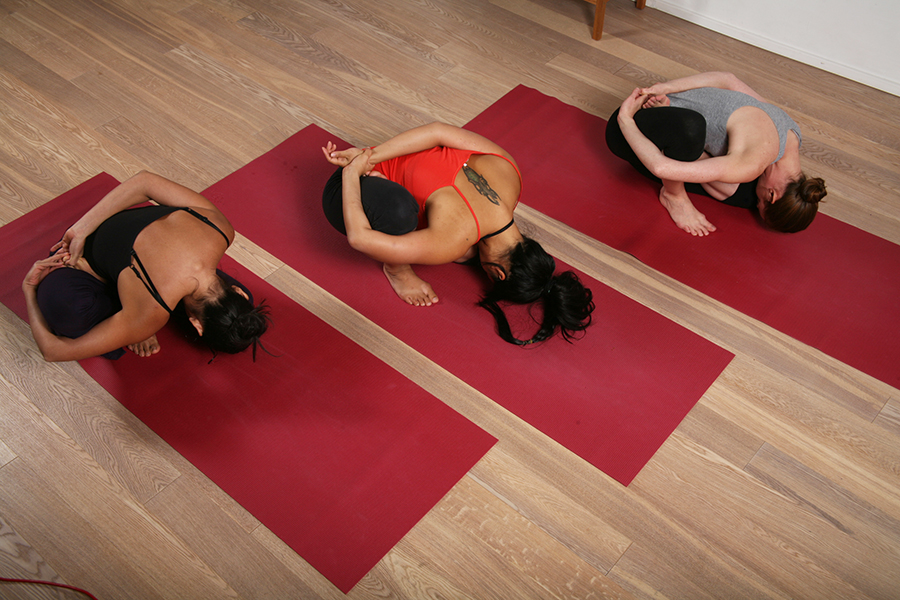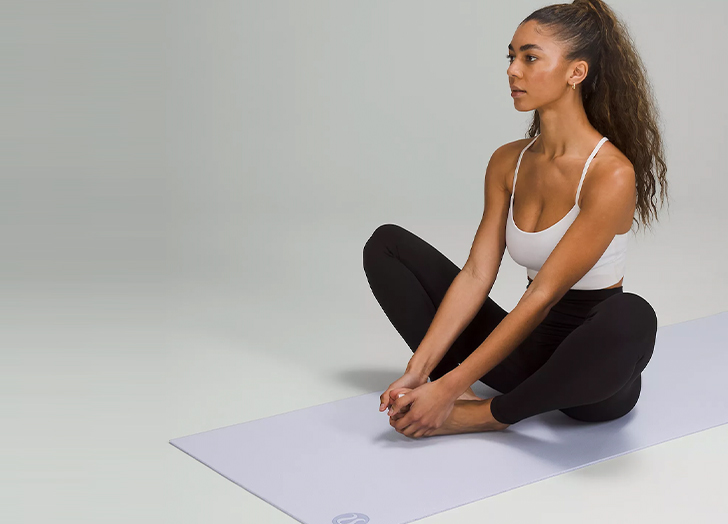
Many people mistakenly think that yoga is only about physical poses. But, yoga has many benefits for the mind and body. It brings together body, mind, breath and harmony. This leads to a more peaceful, happier life. Yoga is also a great way lose weight, build strength and attain inner peace. Here are 10 essential benefits of yoga.
Reduces stress
Yoga is one method to reduce stress. Yoga is a form that teaches self-soothing skills, which can help reduce anxiety and depression. The deep belly breathing in yoga reduces the stress response system by lowering cortisol levels and increasing the brain's oxygen supply. Yoga promotes deep breathing which reduces stress levels and lowers cortisol levels.
Increases flexibility
Yoga can increase flexibility. Reclining your hand in front of your toes is a common position for yoga. Start by lying on your stomach and raising one arm towards the toe. Then, extend your leg straight up and hold it for 30 seconds. For extra benefit, use your other hand to stabilize your hips. Do this for at least three minutes each day to see if it improves your flexibility. Repeat the exercise for two to five more minutes.

Chronic pain is reduced
Many benefits can be found in yoga for people suffering from chronic pain. To target the root cause, yoga combines physical therapy and mindfulness techniques with breathing exercises. The body goes into fight or flight mode when it feels pain. Regular yoga practice has been shown to reduce this physiological state, according to studies. Yoga can also increase flexibility and strength and improve mindfulness. Among the many benefits of yoga for chronic pain, it is especially beneficial for people who are unable to do physical exercise or engage in strenuous exercise.
Increases sleep
A meta-analysis of studies on yoga and sleep quality showed evidence of positive effects. Participants in the Yoga program had less sleep disturbances, more sleep latency, and were more likely to use fewer sleeping medications. They also experienced better habitual sleep efficiency and lower sleep medication usage. The overall improvement in sleep quality was noted by the researchers. The researchers also found no differences in daytime dysfunction between the groups. It remains to be determined how these effects will be sustained.
It reduces inflammation
Recent research shows that yoga may be able reduce inflammation's harmful effects by improving blood markers. Yoga and meditation may play a role in this. Both of these methods can help to regulate the immune system which is an important part in aging gracefully. Yoga may also be able to reduce stress levels and blood sugar levels. It can have both short-term as well as long-term benefits for your health. Read on to find out how yoga can help decrease inflammation.
Increases interoceptive awareness
Yoga can have therapeutic effects by increasing interoceptive awareness. Although little research has been done on yoga and interoception in trauma patients, some studies have suggested that it may improve psychological and emotional distress. This study was a mixed-methods design that examined the relationship between interoceptive awareness, yoga's therapeutic benefits and PTSD patients. The researchers also measured changes in body consciousness, attention regulation, emotion regulation, and body awareness in participants during a TSY Intervention.

Increases self-confidence
This study aims to answer the question, Does yoga exercise increase self-confidence? Participants completed demographic questionnaires, a self-esteem survey, and the Rosenberg Self-Esteem Questionnaire. Participants did yoga poses in a laboratory cubicle as well as completing the questionnaire. The study's protocols were identical to those used by Carney and coauthors. Ranehill, et al. (2010). (2015). To measure fatigue, the study used mock electrodes.
FAQ
What do I need to start practicing yoga?
You will need a mat (some are foldable), some loose clothing, and a towel or blanket to place under your head while lying down.
Additionally, props may be needed for certain poses such as blocks or straps, bolsters/bolsters blankets or towels.
You shouldn't have anything else. You must have a desire for positive change in your life and be willing to dedicate yourself to yoga.
Do I need a warm-up before I try yoga?
No. No.
However, stretching your muscles before going to exercise can help to relax stiff or sore muscles.
Is it possible for me to practice yoga at home?
Absolutely! There are many ways to practice yoga at your home. You can also use DVDs, CDs and books.
YouTube offers free access to online yoga videos. The best way to learn is with a skilled instructor.
Statistics
- About one in seven U.S. adults practiced yoga in the past 12 months, according to a 2017 national survey. (nccih.nih.gov)
- The people in the yoga group were 37 percent more likely to have quit smoking by the end of the 8-week program. (nccih.nih.gov)
- According to calorie estimates calculated at Harvard Medical School, the average 125-pound person burns about 120 calories in a half hour of hatha yoga, and a 185-pound person burns about 178 calories in that half hour. (everydayhealth.com)
- Start your Fall off right with 20% off All Access Membership when you sign up by 9/25! (corepoweryoga.com)
- Lock in 25% off your Founding Member rate. (corepoweryoga.com)
External Links
How To
Is yoga a good workout?
Yoga isn't for people who just want to lose weight. Yoga helps you to develop flexibility, balance coordination, strength and calmness.
Yoga is not just exercise; instead, it's an art form. These poses can help you to relax and calm down. They improve posture, concentration, and respiration.
The term "yogi" refers to someone who practices yoga. Yogis follow various forms of yoga, including Hatha, Ashtanga, Iyengar, Vinyasa, Bikram, Kundalini, Yin Yang, and Restorative.
There are many types of yoga, but they all have similar goals. Each style focuses on different aspects. Yoga styles include Hatha, pranayama (meditation), and pranayama (pranayama).
You don't need any equipment for some yoga exercises:
-
Sun Salutation: This series of 12 postures begins with a forward bent, and then 10 additional poses.
-
Warrior pose - This is when you hold a stick or a staff and take a warrior's pose.
-
Triangle Pose: This is where one leg is lifted behind the other and you bend at your knees.
-
Standing Forward Bend – This is a pose where you sit on the ground with your legs straightening and then fold forward at the waist.
-
Seated Twist – This pose can be performed while seated on either a chair or a mat.
-
Cobra Pose – This is a pose where you lie flat on your back and raise your arms above your head.
-
Child's posing - This position is performed while facing up on the ground.
-
Cat/Cow Pose: This combination of a cow and cat pose is called the Cat/Cow Pose. Place your upper body on the ground and lie down. Now roll to your side, and then place your hands below your shoulders.
-
Head Tilt – This pose involves tilting your head back, while your eyes are closed.
-
Shoulder Stand – This is a standing position in which your feet are raised above your head.
-
Tree Pose - This pose is achieved while kneeling on your knees with both hands placed underneath your shoulders.
-
Bow Pose – This is when you bend forward from your hips and place your hands on the ground.
-
Corpse Pose -- This pose is for five minutes.
-
Mountain Pose- You can call this mountain pose because your spine is straight up and you are tall.
-
Legs up the Wall Pose – This pose involves hanging upside down from a wall.
-
Side Angle Pose - This pose is accomplished by leaning against a wall and putting your right arm next to the wall.
-
Plank Position- When you lie on your stomach and extend your left hand and right foot apart, you can achieve this position.
-
Bridge Pose – This is a pose where you balance on your elbows, and toes.
-
Reverse Table Top Pose - This pose is attained by lying on your tummy and reaching your arms toward the ceiling.
-
Handstand – This pose requires strength and balance. Hold yourself in between two walls or use a door frame to do this pose.
-
Half Moon Pose - This pose is also known as Hero Pose. This is achieved by standing on your hands, and toes.
-
Headstand (or Handstand) - This pose requires excellent balance and strength. This pose is possible on a brick wall or on a doorframe.
-
Forearm Balance- This position is done with your forearms on a tabletop.
-
Spinal Twist – This position is where you lie on your stomach while reaching for your arms.
-
Supported Bound Angle Pose - This pose requires balance and support. To lean on a sturdy object, such as a tree trunk or an old beam, you'll need one.
-
Wide Leg Forward Fold - This pose is achieved by spreading your legs apart and touching your toes.
-
Single Pigeon Pose – This pose is similar the the wide leg forward fold, but has only one limb extended.
-
Extended Puppy Dog Poses are very relaxing. It involves extending your legs outward and bent your knees.
-
Situated Forward Bend – This pose allows you to sit cross-legged while stretching your calves.
-
Crow Pose is a difficult pose that can be very rewarding once you have mastered it. It is done by raising your arms above your head and lowering them until they parallel to the floor.